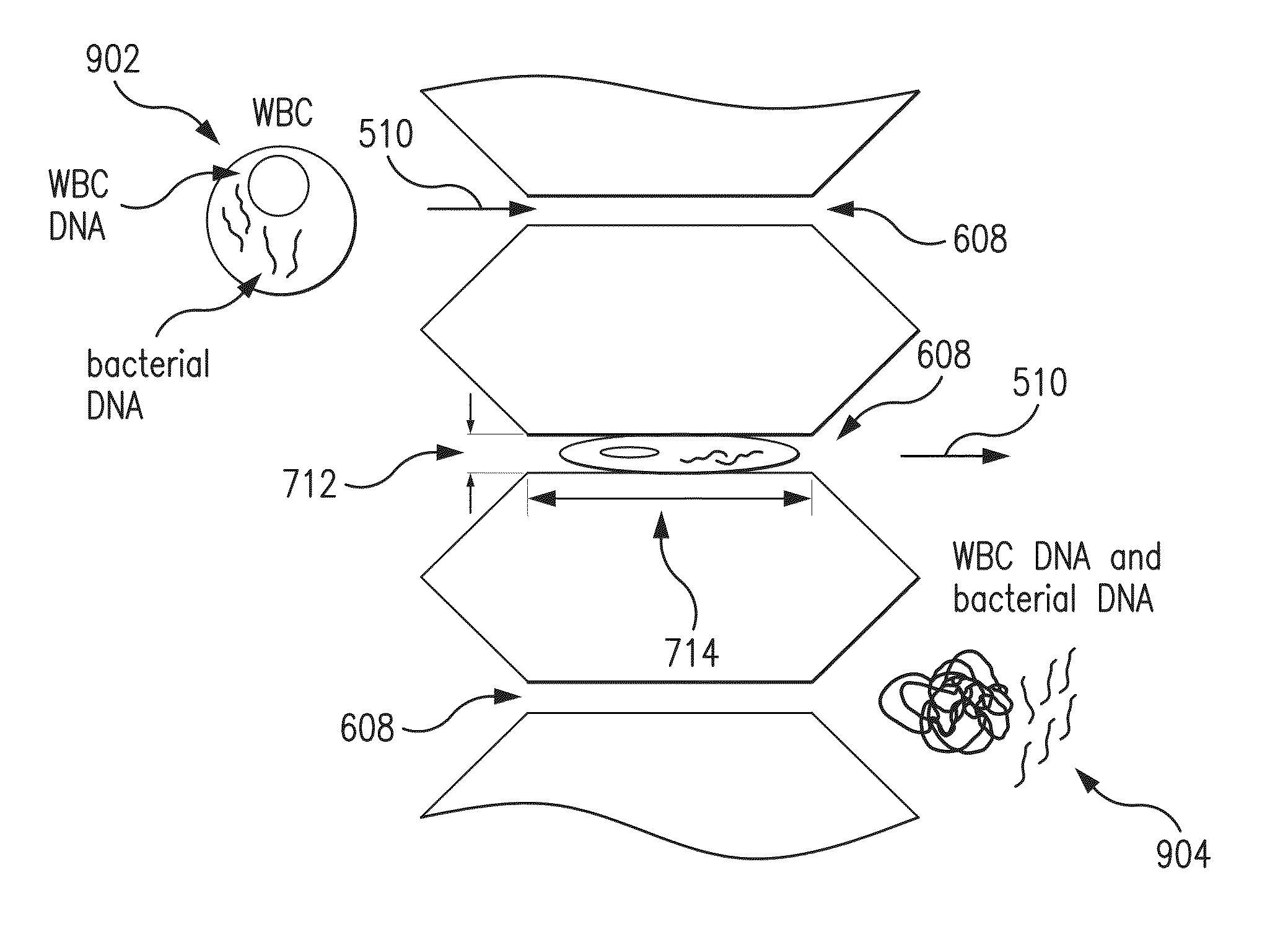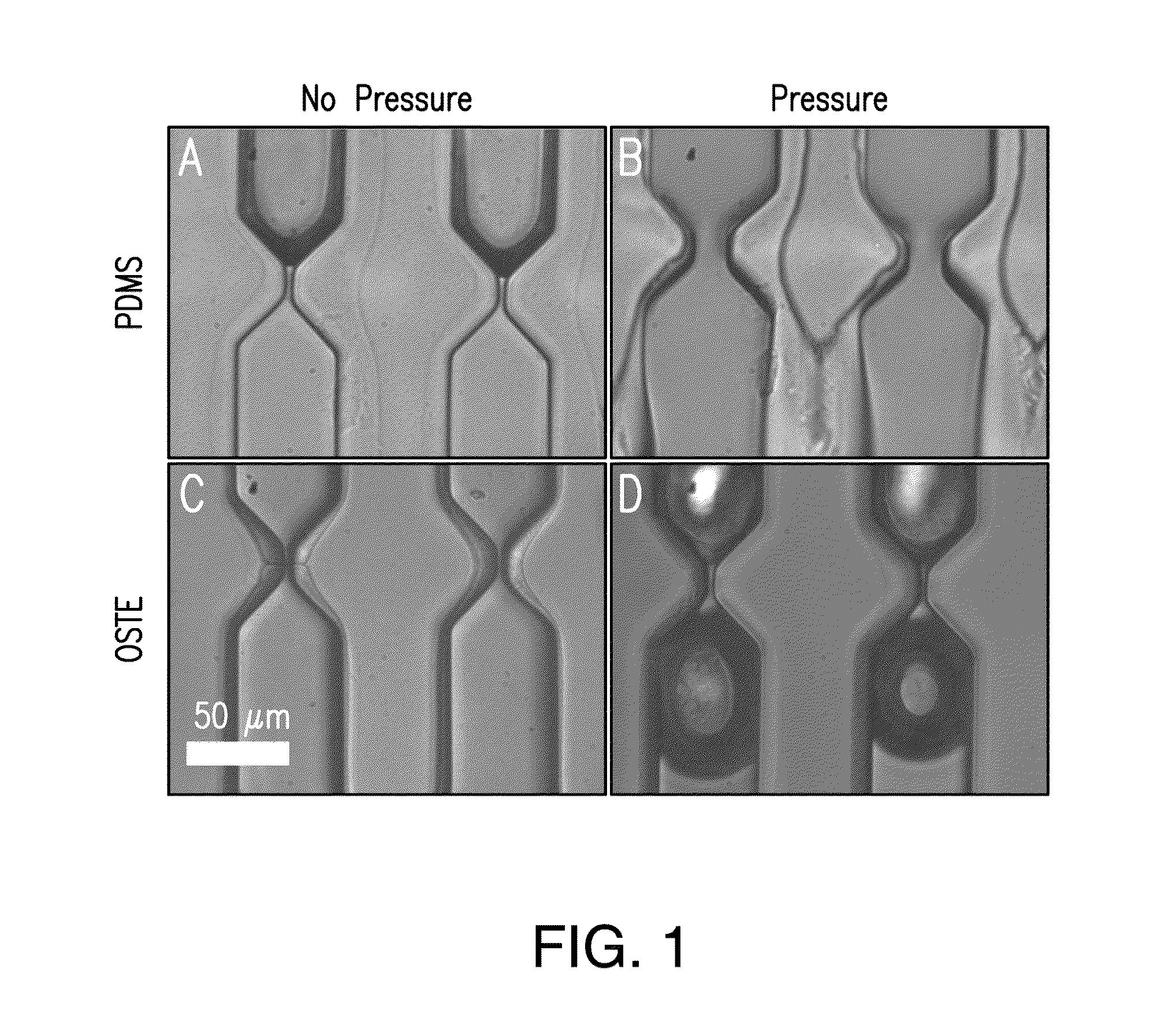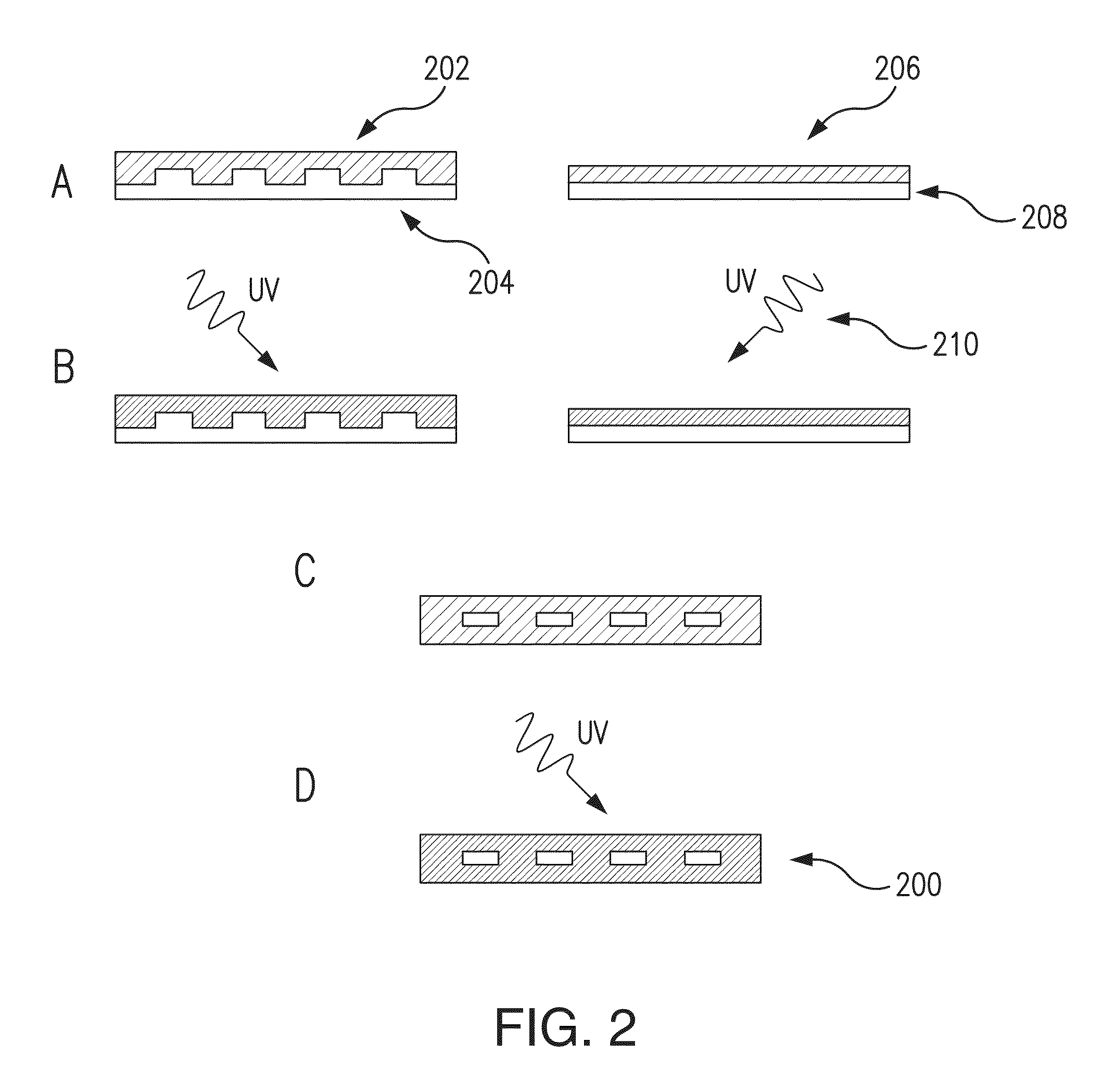Methods and systems for continuous flow cell lysis in a microfluidic device
- Summary
- Abstract
- Description
- Claims
- Application Information
AI Technical Summary
Benefits of technology
Problems solved by technology
Method used
Image
Examples
example 1
[0079]The method for continuous flow cell lysis in a microfluidic device 800, according to some embodiments of the invention, was tested under four scenarios.
[0080]According to a first embodiment, the method was performed using a microfluidic device 800 comprising 18 microfluidic channels 502 each having 1 constricted region with a 3 μm constricted width (“single nozzle”).
[0081]According to a second embodiment, the method was performed by adding a detergent to the single-nozzle configuration above (“single nozzle+detergent”). The detergent comprised the addition of 0.1% Triton X-100 to the fluid flowing through the microfluidic device 800.
[0082]According to a third embodiment, the method was performed using a microfluidic device 800 comprising 20 microfluidic channels 502 each having 4 constricted regions with a 3 μm constricted width (“multi-nozzle (3 μm)”).
[0083]According to a fourth embodiment, the method was performed using a microfluidic device 800 comprising 20 microfluidic ch...
example 2
[0087]The method for continuous flow cell lysis in a microfluidic device 800, according to some embodiments of the invention, was tested under two scenarios.
[0088]According to a first embodiment, the method was performed using a microfluidic device 800 comprising 40 microfluidic channels 502 each having 10 constricted regions 608, where the constricted width of the first five constricted regions 608 along the fluid flow path 510 was 6.5 μm and the constricted width of the last five constricted regions 608 along the fluid flow path 510 was 5 μm; the constricted length was 15 μm; the non-constricted width was 52 μm and the non-constricted length was 80 μm. The thermoplastic polymer was an OSTE polymer made from an OSTEmer Allyl 30 prepolymer (“OSTE”).
[0089]According to a second embodiment, the first embodiment was modified in that the thermoplastic polymer was PDMS (“PDMS”).
[0090]The fluid caused to be flowed through the microfluidic devices 800 comprised MDA-MB-231 human breast cance...
PUM
| Property | Measurement | Unit |
|---|---|---|
| Length | aaaaa | aaaaa |
| Length | aaaaa | aaaaa |
| Fraction | aaaaa | aaaaa |
Abstract
Description
Claims
Application Information
 Login to View More
Login to View More - R&D
- Intellectual Property
- Life Sciences
- Materials
- Tech Scout
- Unparalleled Data Quality
- Higher Quality Content
- 60% Fewer Hallucinations
Browse by: Latest US Patents, China's latest patents, Technical Efficacy Thesaurus, Application Domain, Technology Topic, Popular Technical Reports.
© 2025 PatSnap. All rights reserved.Legal|Privacy policy|Modern Slavery Act Transparency Statement|Sitemap|About US| Contact US: help@patsnap.com



